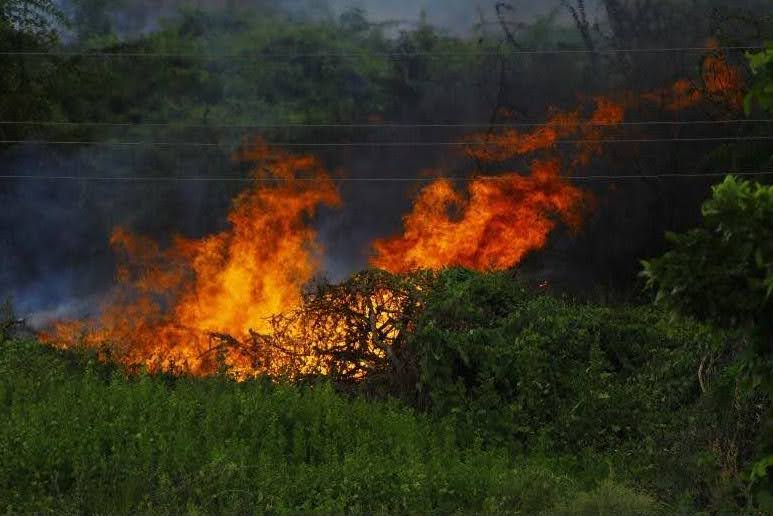How to Prepare for a Wildfire in Atlantic Canada
Wildfires have become a growing concern across Atlantic Canada. A wildfire is an unplanned or person-caused fire that requires suppression action by firefighters and/or air tanker. Based on a 20-year average, 118 wildfires burn 22,993 hectares in Newfoundland and Labrador each year. In 2024, Nova Scotia saw 83 wildfires, including five in Annapolis County, which burned around 47.5 hectares of land. With increasing dry spells, warmer temperatures, and shifting wind patterns, communities in Nova Scotia and Newfoundland and Labrador are now more vulnerable than ever.
Wildfire suppression efforts are most successful when fires are detected and reported early. Early detection and an aggressive initial attack provide the best opportunity to protect forest resources, property and people, and help keep the costs associated with fighting wildfires to a minimum.
While many homes can survive a wildfire, the ones that do almost always have one thing in common: they were prepared. Here’s how you can reduce your risk and protect your family, property, and peace of mind.
Preparing Your Home for a Wildfire
- Fire-Resistant Design and Maintenance
- Use non-combustible materials for your roof, siding, and decks.
- Treat wood surfaces with fire-retardant chemicals.
- Regularly clean your roof and gutters to remove leaves and debris.
- Install spark arresters on chimneys and stovepipes.
- Use metal mesh screens to seal vents and openings under decks, porches, and attics.
- Choose fire-resistant plants and keep trees trimmed, especially near structures.
- Create a Defensible Space
- Create a 10 to 30 metre safety zone around your home:
- Clear dry vegetation, brush, leaves, and debris.
- Space out trees and prune branches at least 2 metres off the ground.
- Remove limbs that overhang your roof or chimney.
- Keep grass trimmed and green.
- Clear a 3-metre zone around propane tanks and barbecues.
- Store firewood and flammable materials at least 30 metres away from the home.
- Water Supply and Fire Tools
- Have a garden hose long enough to reach all areas of your home.
- Install freeze-proof outdoor taps on multiple sides of your house.
- Maintain an accessible water source (e.g. pool, pond, well).
- Consider a gas-powered water pump in case of a power outage.
- Keep tools on hand: rake, axe, shovel, chainsaw, and buckets.
- Emergency Planning for Your Family
- Create a family evacuation plan with multiple routes.
- Build a 72-hour emergency kit with food, water, medication, clothing, flashlights, and important documents.
- Prepare a “go bag” for each family member, including pets.
- Store valuables, keepsakes, and key documents in an easy-to-grab container or fireproof box.
- Teach family members how to use fire extinguishers and review how to turn off gas and utilities.
What to Do During a Wildfire
If an evacuation is ordered:
- Leave immediately.
- Take your emergency kit and pets.
- Lock your home and choose a safe route away from the fire.
- Let someone know where you’re going.
If you’re not ordered to evacuate but fire is nearby:
- Wear protective clothing (cotton or wool, gloves, boots).
- Close all windows, doors, vents, and blinds.
- Move flammable furniture to the centre of rooms.
- Shut off gas, propane, or oil supplies.
- Place sprinklers on the roof and near fuel tanks, and run them if safe.
- Fill bathtubs, garbage cans, and pools with water.
- Keep your vehicle packed with essentials in case you must leave quickly.
- Turn on outside lights to help firefighters locate your home in smoke.
After the Fire: Returning Safely
- Only return home once officials declare it safe.
- Check the roof and attic for embers or hot spots.
- Maintain a fire watch for several hours after returning.
- Avoid damaged structures, downed power lines, and ash pits.
- Keep pets on a leash or indoors—hot spots may still exist.
- Wear gloves, sturdy shoes, and a mask when cleaning.
- Wet down debris to avoid inhaling ash and dust.
- Discard food exposed to heat, soot, or smoke.
- Do not use tap water until it’s declared safe for drinking and cleaning.
Munn Insurance Has You Covered
At Munn Insurance, we’re committed to helping you prepare, protect, and recover. Need to review your wildfire coverage? Want to update your policy or file a claim? Not sure what’s included in your home or auto insurance? Call us today at 1-855-726-8627 or visit munninsurance.com.
Stay ready. Stay safe. Stay protected with Munn. Because when disaster strikes, you deserve peace of mind.
Related News
Recent News
Temporary Office Closure and System Maintenance – October 23–24th, 2025
As part of our exciting relocation to our newly renovated Head Office at 187 Kenmount Road, St. John’s, Munn Insurance will be completing a major IT and phone server migration this month. To complete this [...]
It’s Not Just Price: What Really Matters When Choosing Home & Auto Insurance
Let’s be honest — price is usually the first thing people look at when shopping for home or auto insurance. And that’s completely fair. No one wants to pay more than they have to. But [...]
The Real Costs of ATV Accidents on City Streets in NS and NL
We’re seeing a growing and concerning trend in communities across Newfoundland and Labrador and Nova Scotia: more and more people — especially youth — are driving ATVs, dirt bikes, and other off-road vehicles on public [...]












